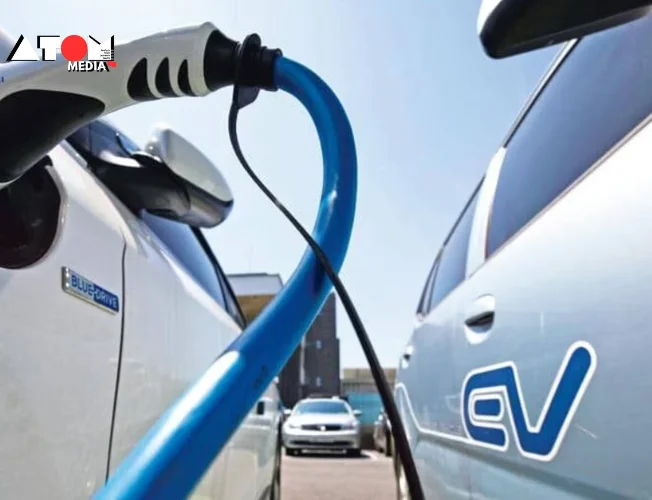India’s journey toward sustainable mobility has gained significant momentum in recent years. In this landscape, the Prime Minister’s Office (PMO) has been playing an active role in shaping policies and frameworks to support the electric vehicle (EV) industry. Recently, a PMO advisor highlighted the need to lower Goods and Services Tax (GST) on EV batteries and charging infrastructure, a move that could be pivotal in accelerating the adoption of EVs across the country.
The advisor’s remarks come at a time when India’s EV market is witnessing rapid growth, with projections estimating it to become a $110.74 billion industry by 2029. Despite this potential, challenges such as high upfront costs, inadequate charging networks, and tax policies remain significant barriers to mass EV adoption. Addressing these hurdles could help India establish itself as a global leader in sustainable mobility.
The GST Conundrum in EV Adoption
The PMO advisor underscored the challenges posed by the current GST framework on EV components, particularly batteries and charging infrastructure. “The higher GST for EV batteries and charging infrastructure probably needs to be corrected,” the advisor said during a recent discussion on India’s EV roadmap.
EV batteries, which are among the most expensive components of an electric vehicle, currently attract a GST rate that adds significantly to the overall cost of the vehicle. Similarly, charging infrastructure, essential for addressing range anxiety and facilitating EV adoption, is subject to high taxation. Reducing these rates could directly lower the cost of EV ownership, making it a more viable option for consumers.
While the GST Council, comprising representatives from both central and state governments, holds the authority to decide tax rates, the advisor’s comments indicate growing recognition within government circles about the need for reform. By lowering GST on EV-related components, the government could send a strong signal of its commitment to sustainable mobility and encourage private sector participation in the EV ecosystem.
Two-Wheeler and Three-Wheeler Segments: Key to India’s EV Transition
The advisor also emphasized the importance of setting higher electrification targets for two-wheelers and three-wheelers, which dominate India’s vehicle market. Together, these segments account for over 80% of vehicle sales in the country and are critical to achieving mass electrification.
Transitioning these vehicles to electric powertrains could significantly reduce India’s dependency on fossil fuels and address pressing environmental concerns such as air pollution in urban areas. Moreover, electrification of two-wheelers and three-wheelers aligns with the government’s broader sustainability goals and net-zero emissions targets.
To achieve these ambitious goals, the government may need to introduce additional incentives for manufacturers and consumers in these segments. Lower GST rates on components like batteries and charging infrastructure, combined with subsidies and tax benefits, could create a more conducive environment for the growth of the two-wheeler and three-wheeler EV market.
India’s EV Market: A $110 Billion Opportunity
India’s EV market has been on an upward trajectory, driven by technological advancements, government initiatives, and changing consumer preferences. According to a report by Inc42, the domestic EV industry is projected to reach a valuation of $110.74 billion by 2029. This growth is expected to be fueled by increasing investments in EV manufacturing, expanding charging networks, and rising awareness about the environmental benefits of electric mobility.
However, realizing this potential requires addressing several challenges, including high battery costs, limited charging infrastructure, and the lack of consumer awareness, especially in rural areas. Policy reforms, such as lowering GST on EV batteries and charging equipment, could play a crucial role in overcoming these barriers and unlocking the market’s full potential.
The Role of Charging Infrastructure in EV Adoption
One of the most critical factors influencing EV adoption is the availability of charging infrastructure. Range anxiety, or the fear of running out of charge before reaching a charging station, remains a significant deterrent for potential EV buyers. Expanding the charging network is therefore essential to boosting consumer confidence in electric mobility.
Reducing GST on charging infrastructure could encourage more private players to invest in this space, leading to the development of a robust and widespread charging network. This, in turn, would make EVs more convenient and practical for everyday use, further driving adoption rates.
Government Initiatives to Promote EV Adoption
The Indian government has already introduced several initiatives to promote EV adoption. The Faster Adoption and Manufacturing of Hybrid and Electric Vehicles (FAME) scheme, for instance, provides financial incentives for the purchase of electric vehicles and the development of charging infrastructure. Additionally, several states have announced their own EV policies, offering subsidies, tax exemptions, and other benefits to both manufacturers and consumers.
Despite these efforts, the high cost of EVs remains a major barrier to adoption, particularly in price-sensitive markets like India. Lowering GST on key components could complement existing incentives and make EVs more affordable for a larger segment of the population.
Impact on Small and Medium Enterprises (SMEs)
Reducing GST on EV batteries and charging infrastructure could also benefit small and medium-sized enterprises (SMEs), which form the backbone of India’s economy. Many SMEs are exploring the use of EV fleets to reduce operational costs and meet sustainability goals. However, the high upfront cost of EVs has been a significant deterrent.
Lower tax rates could make EVs more accessible to SMEs, encouraging them to transition to electric mobility and contributing to the overall growth of the EV ecosystem. Additionally, the expansion of charging networks would make it easier for SMEs to integrate EVs into their operations, further driving adoption.
Challenges Ahead
While the call for lowering GST on EV components is a step in the right direction, implementing such reforms is not without challenges. The GST Council would need to consider the potential revenue implications of reducing tax rates and ensure that the move aligns with the broader fiscal priorities of both central and state governments.
Moreover, the EV industry itself faces challenges such as supply chain disruptions, limited domestic manufacturing capabilities, and a lack of skilled workforce. Addressing these issues requires a coordinated effort from the government, industry stakeholders, and academia.
A Path to Sustainable Mobility
The PMO advisor’s recommendation to lower GST on EV batteries and charging infrastructure underscores the need for targeted policy interventions to support India’s EV transition. By addressing the high cost of ownership and expanding the charging network, the government can create a more favorable environment for EV adoption, particularly in the two-wheeler and three-wheeler segments.
With the EV market poised to become a $110 billion industry by 2029, India has a unique opportunity to lead the global shift toward sustainable mobility. However, realizing this potential requires sustained efforts to address existing challenges and ensure that the benefits of electric mobility reach all sections of society.
As India moves forward on its EV journey, the collaboration between policymakers, industry stakeholders, and consumers will be crucial in shaping a greener, more sustainable future for the country.
Read more: Marketing News, Advertising News, PR and Finance News, Digital News





